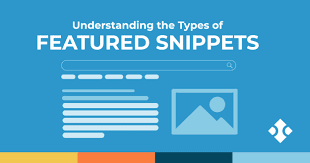In today's digital age, optimizing your content for featured snippets has become an essential part of any successful SEO strategy. Featured snippets, also known as "rich snippets" or "answer boxes," are the highlighted blocks of text that appear at the top of search engine results pages (SERPs). They provide users with quick answers to their questions without having to click through to a website.
One type of featured snippet that has become increasingly popular is the paragraph featured snippet. This type of snippet displays a concise answer to a user's query in a single paragraph format. Here are some tips on how to optimize your content to rank for paragraph featured snippets:
Focus on answering specific questions
Paragraph featured snippets are often triggered by specific questions that users type into search engines. To optimize your content for paragraph featured snippets, you should focus on answering these questions as directly and concisely as possible. Use headings and subheadings to break up your content into easily digestible sections and make sure that your answers are clear and to the point.Use structured data markup
Structured data markup is a type of code that helps search engines understand the content on your website. By using structured data markup, you can provide additional context to search engines about the content of your website, making it more likely to appear in featured snippets. Use the FAQPage schema markup to structure your content in a question-and-answer format.Optimize your meta description
The meta description is the short snippet of text that appears beneath your page's title in search results. While it doesn't directly impact your chances of appearing in a featured snippet, it does affect your click-through rates. Make sure your meta description is concise, engaging, and accurately reflects the content of your page.Use descriptive headings
Headings are an essential part of any well-structured piece of content. They help readers understand the structure of your content and make it easier for search engines to crawl and index your pages. Use descriptive headings that accurately reflect the content of your paragraphs to improve your chances of appearing in a featured snippet.Use bullet points and numbered lists
Bullet points and numbered lists are an effective way to break up your content and make it easier to read. They also make it more likely that your content will appear in featured snippets, as search engines can easily pull out these types of content and display them as snippets.Provide high-quality and relevant content
Ultimately, the most important factor in appearing in featured snippets is providing high-quality and relevant content. Make sure that your content is well-researched, accurate, and up-to-date. Focus on providing value to your readers, and your chances of appearing in featured snippets will increase.Optimizing your content for paragraph featured snippets requires a combination of technical SEO and high-quality content. By focusing on answering specific questions, using structured data markup, optimizing your meta description and headings, using bullet points and numbered lists, and providing high-quality and relevant content, you can improve your chances of appearing in featured snippets and driving more traffic to your website.


Comments